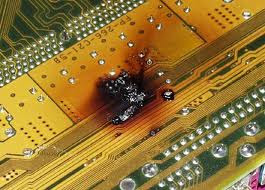Users
complaints are minimal when new Personal Computers are rolled out, they start
up quick, shut down fast and programs seems to open in a snap but in time, users begin to notice
that the system is slow or that it hangs up often, where the possibilities for
system slowdowns are endless.
For me when computer started slowing do, I feel like crashing the computer and destroy the whole thing, cause it wont let me do all what i want in a snap, slow loading files, slow opening files, slow shut-down, slow boot up, slow in everything, you get embarrassed by your computer when you are at work or when you are doing something important for somebody.
I have identified these problems and narrowed them down to 4 lesser problems that cause systems slowdown.
PROCESSOR OVER HEATING
 Modern processors generate a lot of heat that’s why all processor require some sort of cooling elements, typically a fan of some type. When the processor temperature goes over spec. the system can slow-down or run erratically.
Modern processors generate a lot of heat that’s why all processor require some sort of cooling elements, typically a fan of some type. When the processor temperature goes over spec. the system can slow-down or run erratically.
The processor fan may fail for several reasons:
- Dust is preventing the fan from spinning smoothly
- Fan motor has failed
- Fan bearings are loose and “jiggling”
When a PC
gets low on memory, Windows relies on a process called paging to move page of
memory (Not currently being used) from physical RAM to a swap file (virtual
memory). The page is stored in the swap file until its needed again, at which
time the page is moved back to the physical RAM.
BIOS SETTING
One often
ignored culprit of system slow down is the machine’s BIOS settings. Most
people accept the BIOS settings as they were configured in the factory and
leave them as it is. However, slowdowns may occur if the BIOS settings do not
match the optimal machine configuration. Often you can improve machine
performance by researching you mother board’s optimal BIOS settings-which may
not be the same as the factory defaults.
There are
many signs of imminent failure before a hard disk finally gives up. Some of
these signs include.
- Slow access times on the affected
drive.
- An increasing number of bad sectors
when running ScanDisk and chkdsk.
- Unexplained Blue screens
- Intermittent Boot failures
Detecting a
failing hard disk can be tricky because the early signs are subtle. Experienced
computer professionals can often hear a change in the normal disk spin. After
the disk deteriorates further, you’ll see the system crawl to a standstill.
When you
notice the system slow down, run ScanDisk or chkdsk, depending on your
operating system, if you notice a bad sector where a good sector existed
earlier, that’s a clue that the disk is going bad. Back up the data on the disk and prepare for it to fail soon. some of this write up may be found at TechRepublic
;








